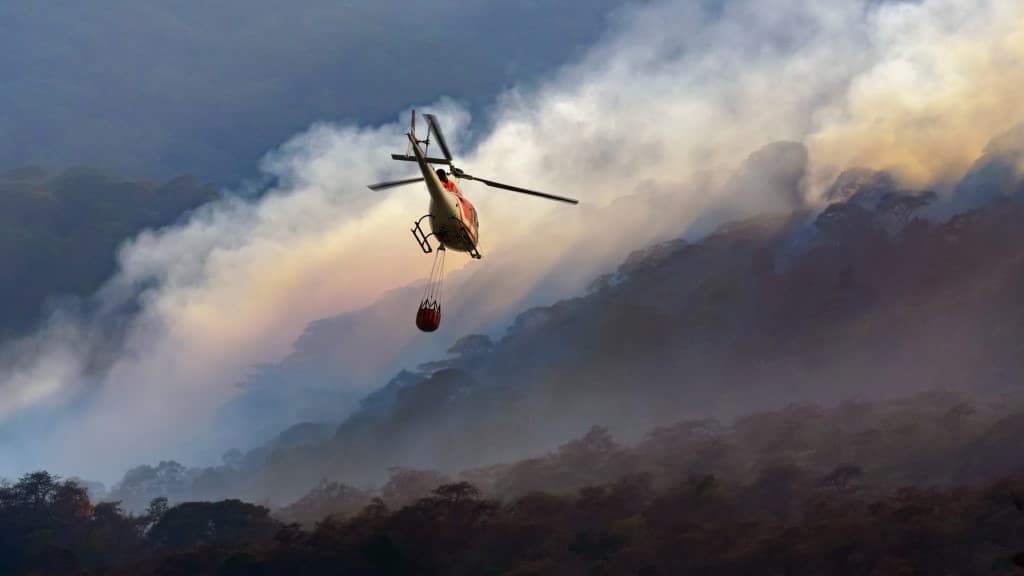Increasing wildfire incidents and technological innovation spur firefighting aircraft market growth
- March 7, 2024
- 8:01 am


Iain Hoey
Share this content
Global trends in firefighting aircraft market
The global firefighting aircraft market is experiencing significant growth, driven by an increase in wildfire frequency and severity, and advances in firefighting technology.
Allied Market Research’s recent report titled “Firefighting Aircraft Market by Aircraft Type (Fixed-Wing and Rotorcraft), Tank Capacity (Less Than 10,000 Liters, 10,000 to 30,000 Liters, and More Than 30,000 Liters), Maximum Takeoff Weight (Less Than 8,000 Kg, 8,000 to 30,000 Kg, and More Than 30,000 Kg), and Range (Less Than 1,000 Km, 1,000 To 3,000 Km, and More Than 3,000 Km): Global Opportunity Analysis and Industry Forecast, 2023–2032”, provides a comprehensive analysis of these trends.
The report indicates that the industry, valued at $9.0 billion in 2022, is projected to reach $16.2 billion by 2032, growing at a compound annual growth rate (CAGR) of 6.3% from 2023 to 2032.
Key drivers and challenges
The market’s growth is attributed to several factors, including rising environmental awareness, governmental investments, and climate change impacts.
Conversely, the market faces challenges such as high costs and limited availability of specialised aircraft.
However, ongoing technological advancements and sustainable fire retardant research offer promising opportunities for market expansion.
Impact of Russia-Ukraine conflict
The recent Russo-Ukrainian war has introduced economic uncertainties, potentially affecting firefighting budgets and the procurement of firefighting aircraft.
Additionally, supply chain disruptions, particularly involving titanium, a key aerospace material, have impacted major aircraft manufacturers.
Market segmentation insights
In terms of aircraft type, the fixed-wing segment dominated the market in 2022 and is expected to maintain its lead, benefiting from attributes like high speed and large capacity.
Meanwhile, the rotorcraft segment, known for its adaptability and quick response, is predicted to witness the highest growth rate.
Tank capacity-wise, the segment with less than 10,000 liters dominated in 2022, offering versatility in varied environments.
However, the more than 30,000 liters segment is anticipated to grow the fastest, catering to high-volume firefighting needs.
Regarding maximum takeoff weight, aircraft weighing less than 8,000 kg led the market in 2022, due to their diverse mission capabilities.
The segment exceeding 30,000 kg is expected to grow rapidly, addressing large-scale wildfires.
In the range category, the 1,000 to 3,000 km segment held the largest market share in 2022, with demand for regional operations.
Aircraft with a range of more than 3,000 km, suitable for national and international deployments, are set to experience the highest growth rate.
Regional market dynamics
North America led the market in 2022, attributed to increasing wildfire incidences.
The Asia-Pacific region is projected to grow at the fastest CAGR, driven by enhanced firefighting initiatives and funding.
IFSJ Comment
The firefighting aircraft market is witnessing a dynamic phase of growth, shaped by evolving environmental conditions and technological advancements.
This trend reflects a global shift towards more efficient and effective wildfire management strategies.
The market’s expansion, marked by the development of diverse aircraft types and capacities, indicates a comprehensive approach to addressing various firefighting scenarios.
As the industry navigates through economic uncertainties and supply chain challenges, its resilience and adaptability remain crucial in meeting the increasing demands for aerial firefighting capabilities.

